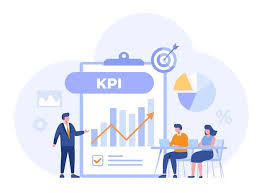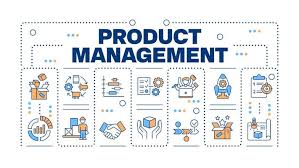How do you evaluate software architecture for scalability and maintainability?
The Imperative of Architectural Evaluation
The significance of deeply scrutinizing a company's software architecture cannot be overstated. Technical Due Diligence (TDD), the comprehensive evaluation of a target company's technological aspects, delves into the organization's tech infrastructure, software systems, intellectual property, and cybersecurity measures, among other factors. Its essence lies in uncovering hidden technical risks and opportunities.
Ignoring this vital step means risking unforeseen challenges, such as inheriting substantial technical debt, outdated systems, or significant security vulnerabilities. These issues can severely impact post-transaction operations, inflate costs, and hinder a company's ability to innovate and compete effectively. Conversely, a robust architectural evaluation helps assess the true value of tech assets, ensures alignment with strategic goals, and allows for smoother integration planning, reducing disruption and costs.
Key Pillars of Architectural Assessment
When evaluating software architecture, two crucial quality attributes demand meticulous attention: scalability and maintainability.
Assessing Scalability
Scalability refers to a system's capacity to handle increased users, data volume, or transaction volume without compromising performance. It's about ensuring the system can grow gracefully as demand rises. Key considerations include:
• Forms of Scaling: Understanding whether the architecture supports vertical scaling (upgrading existing hardware) or, more commonly, horizontal scaling (adding more machines) is vital for sustained growth. Modern architectures often leverage microservices, which allow for independent scaling and deployment of services.
• Performance Metrics: Evaluating scalability involves monitoring key performance indicators (KPIs) such as response time, throughput (transactions per second), and resource utilization (CPU, memory, bandwidth). These metrics reveal how the system behaves under various loads and if scaling is proportional to the applied load.
• Testing Methodologies: Load testing measures how systems manage expected load volumes, simulating real-life scenarios to identify bottlenecks. Stress testing pushes the system beyond its normal operational limits to find breaking points and assess recovery capabilities. Scalability tests specifically measure how an application can scale certain performance attributes. These tests are crucial for validating the system’s capacity to meet future demands.
• Cloud Infrastructure: Cloud platforms (like AWS, Azure, GCP) provide essential services and tools to support scalable architectures, offering elasticity and auto-scaling capabilities. Evaluating their utilization and cost optimization is key.
Ensuring Maintainability
Maintainability refers to the ease with which a system can be modified, faults corrected, or adapted to a changing environment. It directly impacts the long-term cost and agility of software development. Core aspects include:
• Code Quality: A clean, modular, and well-commented codebase is paramount. Assessment includes adherence to coding standards, reusability, and clear separation of concerns. Tools like SonarQube are invaluable for continuous inspection of code quality, identifying code smells, bugs, and vulnerabilities.
• Technical Debt Management: Technical debt, often accumulated from prioritizing speed over quality, represents future rework that hinders innovation and increases costs. It can manifest as code debt, design debt, documentation debt, or architectural technical debt. Measuring technical debt, though challenging, can be done using methods like the SQALE or Gartner models, or by tracking metrics such as complexity, risk, and overall debt ratio. Dedicated tools like vFunction, CAST Imaging, Snyk Code, Checkmarx, Veracode, Fortify SCA, Semgrep, Klocwork, DeepSource, and Coverity assist in identifying and monitoring technical debt.
• Documentation and Knowledge Transfer: Comprehensive and up-to-date documentation is crucial for understanding how the system works, especially for new team members. Technical documentation reviews ensure clarity, conciseness, correctness, and completeness (the "4Cs"). Beyond documents, effective knowledge transfer processes are essential for continuity, involving systematic capture, structuring, and distribution of information.
• Integration Capabilities: A flexible architecture should seamlessly connect with existing tools and services using standard protocols (e.g., REST, SOAP, GraphQL). This also includes considering data formats and transformations.
Process of Architectural Evaluation in Practice
A structured approach to evaluating software architecture is paramount:
1. Preparation: Begin with an internal audit of your own systems to identify key components, features, and limitations, and gather all relevant documentation, including code repositories, architectural diagrams, and existing audit reports.
2. Team Assembly: Build a cross-functional team of experts, including tech leads, developers, and business analysts, to provide a holistic view. Engaging external consultants can provide unbiased perspectives.
3. Initial Technical Assessment: Evaluate the software architecture, focusing on component interaction, data flow, deployment, bottlenecks, and security vulnerabilities. Review the codebase for quality, reusability, and adherence to standards. Assess all third-party dependencies for licensing compliance and integration risks.
4. In-Depth Analysis and Validation: Conduct rigorous performance and scalability testing after initial assessments. Implement a detailed security audit and vulnerability assessment to identify potential threats, assess controls, and ensure compliance with regulations like GDPR or SOC 2. Utilize automated tools for code review (SAST, SCA, static security analysis) to identify issues early in the development cycle.
5. Reporting and Recommendations: Document all findings comprehensively in a final report, detailing the current state, identified risks, suggested improvements, and conclusions. Prioritize action items based on their impact on security, performance, and business objectives.
6. Continuous Improvement: Technical due diligence is not a one-time event; it's an ongoing process. Establish mechanisms for continuous monitoring, regular reassessments, and tracking of remediation progress to adapt to evolving risks and market changes. This includes regular product roadmap reviews to ensure alignment with goals and market realities.
The Role of Due Diligence in Driving Value
Ultimately, a well-executed technical due diligence process provides a holistic view of a company’s true worth and its capacity to deliver on its promises. It identifies not just inherent technical risks, but also strategic opportunities, enabling investors to make informed decisions that maximize value and achieve superior returns. It is a proactive step that ensures the technology aligns with strategic goals, lays the foundation for seamless integration, and fosters confidence among all stakeholders, leading to sustainable success.



















